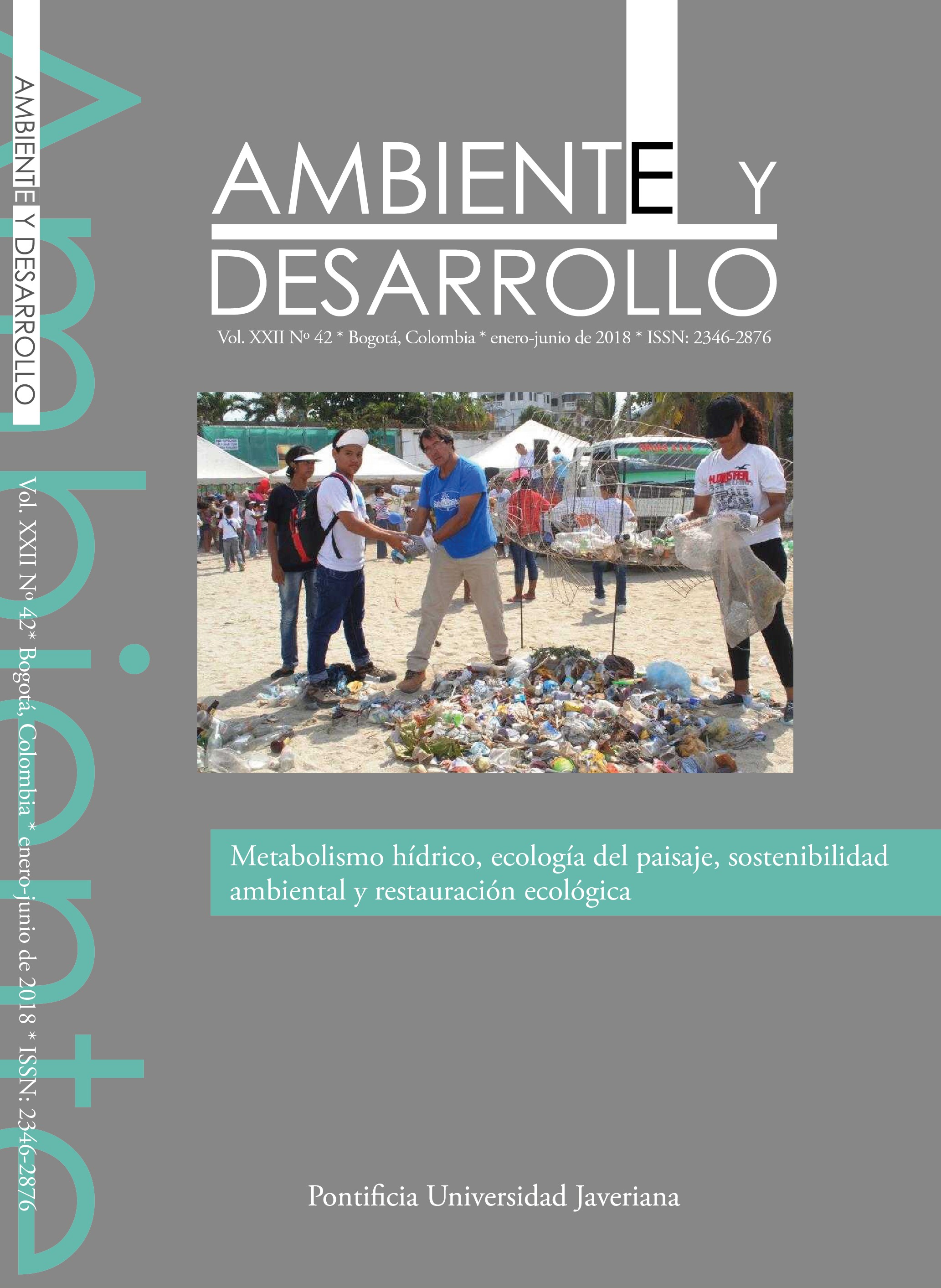Abstract
The archaeological park “Las Piedras del Tunjo” [Tunjo’s Stones] is an area of great ancestral relevance in the region. The rock art expressions have conferred it a heritage significance that is recognized in the whole country. However, its functionality includes different aspects besides the cultural. The fact that it is deemed as a part of the Main Ecological Structure in both the town Facatativá and the Cundinamarca Province, as well as a recreation place for the local inhabitants, makes this park even more significant. This study examines the landscape of the archaeological park, emphasizing the tree-like plant species and their significance regarding the park multi-functionality. This way, this work serves as a tool for planning and shaping spaces that would enable to articulate the cultural, recreational and ecosystemic spheres.
Aponte-García, G. (2003). Paisaje e identidad cultural. Tabula Rasa, (1), 153-164.
Botiva-Contreras, Á. (2011). El origen de las piedras y su entorno. Facatativá "Al final de la llanura". En D. Martínez-Celis, y C. Botiva-Contreras (Coords.), Compendio documental del Parque Arqueológico de Facatativá (pp. 1-59). Facatativá, Colombia: Alcaldía Municipal de Facatativá.
Cobo-Borda, J. G. (2010). Recuerdo de un novelista sudamericano: Eduardo Caballero Calderón. Recuperado de http://www.mcarts.com/cobo/ensayos/caballero-calderon5.html
Consejo de Europa. (2000). Convenio Europeo del Paisaje. Recuperado de http://www.upv.es/contenidos/CAMUNISO/info/U0670786.pdf.
Organización de las Naciones Unidas para la Agricultura y la Alimentación (FAO). (2003). Tesauro plurilingüe de tierras. Recuperado de http://www.fao.org/docrep/005/X2038S/X2038S00.HTM
Gómez-Alzate, A. (2012, noviembre). Criterios metodológicos para el análisis de la calidad visual del paisaje urbano y su sostenibilidad. Ponencia presentada en1° Congreso internacional en gestión y control de la calidad del aire, auditiva y visual, Bogotá.
Gómez-Zotano, J., y Riesco-Chueca, P. (2010). Marco conceptual y metodológico para los paisajes españoles. Aplicación a tres escalas espaciales. Sevilla: Consejería de Obras Públicas y Vivienda, Centro de Estudios Paisaje y Territorio.
Instituto Colombiano de Antropología e Historia (Icanh). (2005). Plan de Manejo Parque Arqueológico de Facatativá "Las Piedras de Tunja". Bogotá: Icanh.
Martínez, D. (2011). El lugar de las piedras. El contexto regional. En D. Martínez-Celis y Á. Botiva-Contreras (Coords.), Compendio documental del Parque Arqueológico de Facatativá (pp. 13 - 14). Facatativá, Colombia: Alcaldía Municipal de Facatativá.
Másmela-Díaz, P. (2010). El paisaje como elemento de la ordenación territorial. Un análisis de paisaje desde su enfoque visual en el borde centro oriental de Medellín, Colombia. Medellín: Universidad Nacioal de Colombia.
Montoya-Ayala, R., Padilla-Ramírez, J., y Stanford-Camargo, S. (2003). Valoración de la calidad y fragilidad visual del paisaje en el Valle de Zapotitlán de las Salinas, Puebla (México). Boletín de Asociación de Geógrafos Españoles, 35, 123-136.
Muñoz-Camacho, L. (2015). Paisaje Funcional. Disfunción de límites sociales. Bogotá: Universidad Católica de Colombia.
Muñoz-Criado, A. (2012). Guía metodológica. Estudios del paisaje. Lugar de edición: Conselleria de Infraestructuras, Territorio y Medio Ambiente.
Olivos-Lombana, A. (2011). Las piedras como memoria. Historia del Parque Arqueológico de Facatativá. En D. Martínez-Celis y Á. Botiva-Contreras (Coords.), Compendio documental del Parque Arqueológico de Facatativá (pp. 191 - 202). Facatativá, Colombia: Alcaldía Municipal de Facatativá.
Orejas-Saco-del-Valle, A. (2001). Los Parques Arqueológicos y el Paisaje como Patrimonio. Revista sobre Arqueología en internet, (3)1, agregar páginas del artículo.
Pérez-Bustamante, L. y Parra-Ponce, C. (2004). Paisajes culturales: el parque patrimonial como instrumento de revalorización y revitalización del territorio. Theoria, 13, 9-24
Sánchez-Palencia, J., Fernández-Posse, M., Fernández-Manzano, J., Orejas-Saco-del-Valle, A., Álvarez-González, Y., López González, L., y Pérez-García, L. (1996). Las zonas arqueológicas como paisajes culturales: El Parque Arqueológico de las Médulas (León). Complutum Extra, 6(2), 383-403.
Ambiente y Desarrollo is registered under a Creative Commons Attribution 4.0 International Public License. Thus, this work may be reproduced, distributed, and publicly shared in digital format, as long as the names of the authors and Pontificia Universidad Javeriana are acknowledged. Others are allowed to quote, adapt, transform, auto-archive, republish, and create based on this material, for any purpose (even commercial ones), provided the authorship is duly acknowledged, a link to the original work is provided, and it is specified if changes have been made. Pontificia Universidad Javeriana does not hold the rights of published works and the authors are solely responsible for the contents of their works; they keep the moral, intellectual, privacy, and publicity rights.
Approving the intervention of the work (review, copy-editing, translation, layout) and the following outreach, are granted through an use license and not through an assignment of rights. This means the journal and Pontificia Universidad Javeriana cannot be held responsible for any ethical malpractice by the authors. As a consequence of the protection granted by the use license, the journal is not required to publish recantations or modify information already published, unless the errata stems from the editorial management process. Publishing contents in this journal does not generate royalties for contributors.



